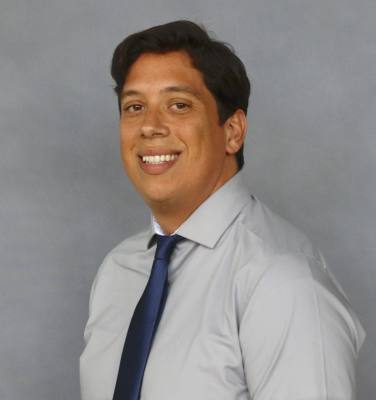Recently released data from the 2020 census shows the city’s population has increased by more than four times that.
Fickes is now a commissioner on the Tarrant County Commissioners Court and has seen plenty of growth during his time in public service. Tarrant County, for example, has grown to 2.1 million residents in 2020—an increase of 16.7% since the 2010 census, when its population was 1.8 million.
“Tarrant County was still one of the fastest growing large counties in the country through this process,” he said.
Precinct 3, which Fickes represents, includes Grapevine, Colleyville and Southlake. Combined, the three cities have seen a 12.8% population increase in the past 10 years and 29.7% since 2000. Fickes’ precinct now represents more than 520,000 residents.
And the growth has not just been in terms of pure numbers, either.
In 2000, 62% of Tarrant County’s residents were classified as white—in 2010, that number was 52%. Data from the 2020 census shows that white residents now account for 43% of the population.
The trends in population growth and diversity are important for local officials, Fickes explained.
“Any time you start seeing [demographic] change, it’s meaningful,” Fickes said. “You need to pay attention to it and you need to be sure that you’re doing what you can do, as local government, to be sure you’re providing the correct and proper services, and in a correct and proper way that fits the people that live in a particular area.”
Steady increases
While some areas of the metroplex have seen more pronounced jumps in population, growth in Grapevine, Colleyville and Southlake has been steady since 2000.
Grapevine, for instance, increased by a little under 4,300 residents between 2000-2010 and by about the same amount again between 2010-2020. City Manager Bruno Rumbelow has worked for the city for 24 years. He said that most of the city’s rapid growth occurred earlier, specifically in the 1980s.
Colleyville’s population increased by a little more than 3,000 residents between 2000-2010 and by about 3,200 between 2010-2020. City Manager Jerry Ducay said that steady pace is intentional and in line with the city’s goals of retaining small town charm and property values.
“Our growth ... is in line with that approach,” Ducay said. “We’re not seeking growth just for the sake of growth—we’re looking for something that brings about improvement in the quality of lives of our residents.”
Southlake’s population increased by about 5,000 residents between 2000-2010 and then by just under 4,700 between 2010-2020. At 31,265 in the 2020 census, City Manager Shana Yelverton said Southlake is approaching its expected buildout of 34,188 people outlined in the city’s land use plan.
“Using this plan as a guide and working with the North Central Texas Council of Governments to understand projected growth for our area, we can envision buildout, understand growth patterns and plan accordingly,” Yelverton said.
Changing demographics
As new faces continue to populate the region, data from the 2020 census suggests those faces are less homogenous than before. Local leaders say what is happening here is reflective of broader trends in the state and region.
“You’ll notice certainly that there are statewide demographic trends that have changed,” Rumbelow said. “From a public official’s standpoint, I think that we have an obligation to understand those trends and to respond positively and appropriately to that.”
Grapevine’s largest growth has been among its Hispanic/Latino population, which grew from 11.6% in 2000 to 20% in 2020. In Colleyville, the city’s Asian population grew from 3.1% to 9.9.% between 2000 and 2020. Similarly, Southlake’s growth in that demographic within the same time period increased from 1.8% to 15.4%.
All three city managers say city staff are looking for ways to best serve the increasing diversity. Southlake, for instance, has seen an uptick in events, such as Southlake Diwali Fest, Chinese Lunar New Year and Somos Southlake, to celebrate its diversity. Ducay points out that Colleyville has 26 houses of worship to reflect its increasingly diverse population.
Ripple effect
The population growth experienced in northeast Tarrant County has practical effects for local government, too.
Colleyville, for instance, says it has worked to make sure its police and fire services remain up to par and improve along with the population as it grows. In Southlake, Yelverton detailed ways the city is working to expand programs it offers to its aging population.
For Grapevine, already the largest of the three cities, the downtown area attracts many visitors and foot traffic during the day. Rumbelow says city staff must keep that in mind.
“Where most suburban communities empty out during the day and fill up at night, we fill up during the day,” Rumbelow said.
Tarrant County Administrator G.K. Maenius has seen the county grow by 45.9% just since 2000, adding more than a half-million residents. He said the business-friendly environment in the region as well as relative affordability are fueling that growth.
“People are coming down here because jobs are available, and the jobs are paid enough to create a livable wage—and that’s what people are looking for,” Maenius said.
That sort of growth has had real implications for Maenius and his staff. Some of the top areas that county government is responsible for include transportation, the judicial system and public health. Maenius said each of those areas have seen their size and scope expanded dramatically as the county has ballooned in size.
But, as far as challenges go, the longtime administrator suggested that such challenges are the good kind of challenge to have.
“Quite frankly, that’s why we get here early and stay late every day,” Maenius said.





